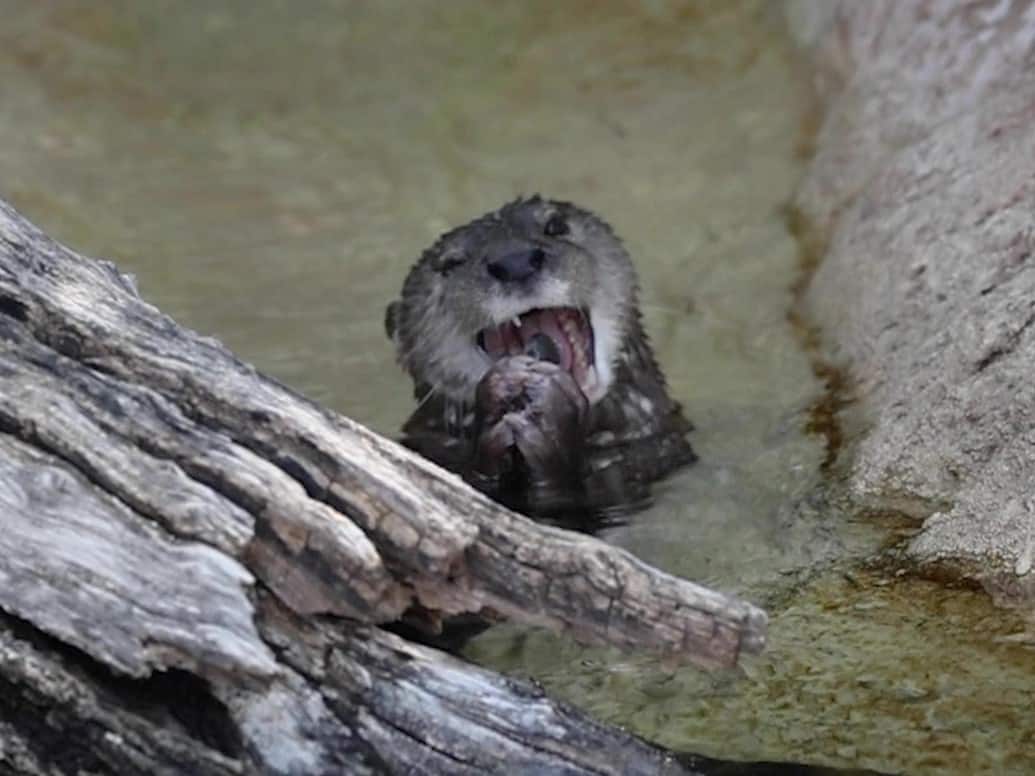Summary of Keeping the Animals Cool:
This content is about how the Phoenix Zoo keeps its animals cool during the summer heat in Phoenix. The zoo uses various methods, such as providing shade, access to water, and temperature-cooling activities to ensure the animals’ well-being. The post mentions specific examples of how animals, such as rhinoceros, elephants, orangutans, cheetahs, otters, squirrel monkeys, tigers, and owls, are kept cool and entertained.
Keeping the Animals Cool: A Glance into the Phoenix Zoo’s Summer Heat Protocols
– The Phoenix Zoo goes to great lengths to ensure the well-being of its animals during the scorching summer months.
– From cold showers to frozen treats, the zoo implements various cooling techniques to keep its residents comfortable.
– Each animal is provided with specific enrichment activities that help them beat the heat and stimulate their minds.
– The zoo’s commitment to animal welfare and conservation shines through its dedication to keeping its animals cool under the hot Arizona sun.
As the summer heat bears down on Phoenix, Arizona, one might wonder how the animals at the Phoenix Zoo cope with such extreme temperatures. It’s easy to assume that the dry, arid climate of the desert is not conducive to keeping animals cool and comfortable. However, the Phoenix Zoo has developed innovative and effective strategies to ensure its residents stay safe and at ease throughout the blistering summer months.
One of the most important aspects of keeping the animals cool is providing ample shade and access to water. The zoo’s enclosures are designed to include shaded areas where animals can seek respite from the scorching sun. Additionally, water features such as ponds, pools, and misters are crucial in lowering body temperatures and relieving the heat.
Take Chutti, the greater one-horned rhinoceros, for example. Chutti enjoys regular cold hose showers in the morning and special treats to satisfy him. Rhinos are k a significant amount of time bathing in water to regulate their body temperatures, and Chutti is no exception. By providing him with a refreshing shower and access to his pond, the zoo ensures that Chutti stays comfortable throughout the day.
Another impressive resident at the Phoenix Zoo is Indu, an Asian elephant. Indu receives a refreshing garden hose shower and benefits from misters and fans overhead in her habitat. These cooling mechanisms automatically kick in when temperatures rise above 90 degrees Fahrenheit. With her unique needs in mind, the zoo ensures that Indu has all the tools to beat the summer heat.
The Bornean orangutans at the zoo also have a special treat to cool them down during the hot summer days. Their diet consists of ice treats from Gatorade, Crystal Light, fruits, and veggies. These frozen delights not oprovide physical relief andal stimulation as the orangutans work to free the fruits and veggies from the blocks of ice. This combination of cooling and enrichment activities is vital for the overall well-being of these brilliant creatures.
For the carnivorous cheetahs, keeping cool is a matter of maintaining a balanced diet. The zoo’s cheetahs are provided with blood sicles frozen with chunks of meat. These treats ensure that heetahs stay hydrated and nourished while enjoying a refreshing snack. With their unique dietary requirements, the zoo ensures that the cheetahs’ cooling techniques align with their natural feeding behaviors.
Kima, the spotted-necked otter, has her “otter pops” variation to keep her cool and satiated. These frozen treats are made with fish to provide essential nutrients and mimic a staple in her diet. Kima takes full advantage of the pond in her habitat, taregularly swimmingnd enjoying naps in the shade. The zoo’s commitment to providing her a stimulating and refreshing environment is evident in her overall well-being.
The squirrel monkeys at the Phoenix Zoo also have their own ing strategies. Buckets filled with frozen treats and grapes are provided to help them beat the heat. Additionally, misters locate treetops ensure that experience a cool and comfortable environment throughout the day. These small primates benefit from the zoo’s attention to detail, as even the tiniest residents receive personalized care.
Moving on to the majestic Sumatran tiger, Raja, his cooling routine involves devouring a blood-sickle while lounging poolside. Although he didn’t take a dip on the day of the media tour, Raja is often seen cooling off with a swim. By providing him with an enriching and refreshing experience, the zoo ensures that Raja remains content and comfortable in his habitat.
Even the birds at the Phoenix Zoo have their own ue cooling mechanisms. Archimedes, the Eurasian eagle owl, enjoys a light garden hose shower. WhDuringirds primarily cool down by wetting their feet, Archimedes takes it a step further by getting a full body rinse, making sure to get in between his feathers. This intriguing behavior showcases the diversity of cooling techniques across different species.
The Phoenix Zoo’s dedication to keeping thitsnimals cool and comfortable during the summer ms a testament to its commitment to animal welfare and conservation. By providing shade, access to water, and engaging in enrichment activities, the zoo ensures that its residents thrive in even the most extreme weather conditions. Visitors to the Phoenix Zoo can witness firsthand the incredible efforts that go into creating a comfortable and stimulating environment for their beloved animals.
In conclusion, the Phoenix Zoo’s methods of keeping its animals cool are unique and fascinating. From cold showers to frozen treats, each resident receives personalized care catering to their needs. By implementing these cooling techniques, the zoo can provide a safe and comfortable environment for its animals, ensuring their well-being and contributing to their overall health and happiness. The Phoenix Zoo’s commitment to animal welfare and conservation is truly inspiring, as they go above and beyond to protect and care for their residents under the scorching Arizona sun.


